What to do in your garden in December!
Although the festive season is just around the corner, there are still a few jobs that need attending in readiness for the New Year ahead.
- During the summer climbing Wisteria’s have put on a lot of growth, so this month is the ideal time to tie in the new shoots to build up the framework of branches. First prune back each side shoot so it is 2-3 buds long, then cut out any unwanted straggly growth back to the main stems. Once this is done no more pruning will be required until next summer. These vigorous plants will also benefit from having a winter mulch of old compost or well-rotted manure placed around the base of their stems.
- If the weather is too cold or wet to do any jobs outside, then there are plenty of jobs to do in the warmth of the greenhouse or shed. All the pots and seed trays need washing in soapy water, so they are clean and ready for use early next year. Propagators and benches can also be washed down so they are clean from any pests or fungal diseases that may be hiding in those tiny crevices. This will give us all a clean start to the year ahead.
- Remember during very cold weather to feed the Birds regularly in the garden. And top up the birdbath so they have some fresh water to drink. If you encourage the birds into your garden at this time of year, hopefully they will also return next spring to nest and feed on some of the aphids and other pests that can cause us gardener’s problems.
- I will be busy on Christmas day sowing my Large Onions. Christmas or Boxing Day is the traditional time for sowing this vegetable, plus it will gives me a good excuse for getting out of the washing up. I sow the variety Globo, as these will grow into whoppers over 1-2lb in weight. Onion Seeds need sowing onto the surface of moist seed sowing compost, and then they should be lightly covered with fine grade vermiculite. Once sown place in a heated propagator set at 20C (70F). Germination usually takes 10-14 days.
- Bush Roses are best pruned in March and this has not changed over the years, but during the wet summer this year I noticed that many roses have put on a lot of additional tall growth. This growth would be best reduced down by about half during December. This will stop this tall growth being caught by any strong winds, as this may cause wind rock, or may even uproot or loosen your plants. Once tops have been reduced leave them alone until you need to prune your Roses again next March as usual.
- December has arrived and this is the ideal month for pruning Blackcurrants. Now that all the leaves have fallen off the plants it makes it easier to see what you are doing. When pruning Blackcurrants you should cut out as much old wood as possible to leave just young growth, that is less than 3 years old. The younger shoots will grow more vigorously and will produce more fruit. The older wood is easily recognised because it is much darker in colour, than the younger shoots and often the bark is a lot rougher. Always try to prune down to a healthy new bud as close to the base of the plant as you can. This will help encourage new shoots to grow from the base. Once pruned give plants generous mulch of well-rotted manure or garden compost.
- Make sure you regularly inspect your harvest of apples and pears in store this winter. Make sure you remove any fruits showing signs of damage or going rotten, as this will stop any of the fungal spores spreading, and affecting the rest of your harvest.
- When the weather is cool and dry, take advantage of these nice days to dig the vegetable plot. If this job is done from now until the New Year you will have a neat and tidy plot ready for the new season. I always dig in plenty of well-rotted manure or mushroom compost to help add some nutrients and structure to the soil. I find digging pleasurable as well as a great way of keeping fit and it helps burn off any of those calories that I may have put on over the festive period.
- If you have some large clumps of Rhubarb, why not cut a piece off and leave it lying on the top of the ground this month to get frosted. This cold period will spur the growth buds into developing sooner. Leave it laying there for several weeks until it has been frosted several times, then pot it up and move it into a warm (Not hot) greenhouse or shed. This will then start to produce some tender sticks of Rhubarb for you to enjoy next spring.
- It always surprises me how much colour and scent there is in the garden at this time of year. Rather than leave this scent outdoors why not cut a few stems of winter flowers, as they show colour and place them in a vase of water indoors. Then as the buds open they will fill your rooms with their colour and fragrance.
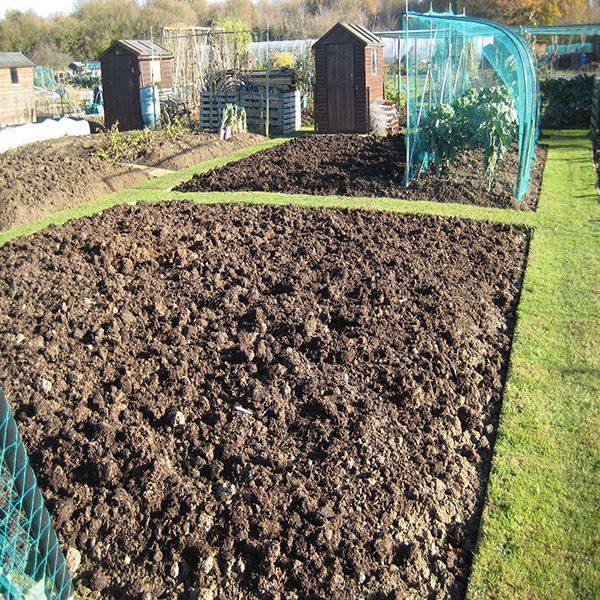
Read More
Andrew Tokely's Gardening Tips for January!
22 June 2020What to do in your garden in January!
Another gardening year has arrived, which fills me with excitement even on these dull winter days and long nights. There are still a few jobs that can be done in the garden as well as some planning for this years harvest.
- If you didn’t get the chance to sow your Sweet peas in a cold frame back in October all is not lost. You can sow Sweet peas this month under glass or on a warm windowsill. Sweet peas I find are best soaked in water overnight prior to sowing. This soaking will make the Sweet peas swell up and aid germination. I like to sow into small pots or root trainers filled with multipurpose compost and germination usually starts within 10-14 days.
- It is wise at this time of year to keep an eye on your Fruit bushes like Gooseberries or Blackcurrants. The buds on these bushes are beginning to fatten up this month. These make a tasty meal for birds, especially Bullfinches or Sparrows if food is scarce. So it is wise to give these plants some form of net protection over your plants.
- This month I will be making my first sowings of summer bedding. If you want to grow Geraniums or Begonias, these can be sown in a heated propagator at a minimum temperature of 21C (70F). Geranium seed should be lightly covered with a sprinkling of fine grade vermiculite. But as Begonia seed is like dust this needs light to germinate, and is best sown on the surface of the compost with no covering at all.
- If you are lucky enough to have a cold greenhouse, cold frame or conservatory, you can make an early sowing of a few salad crops. I like to sow some Radish, Spring Onions and baby salad leaves in pots or troughs this month as this will give me some early fresh salads to enjoy within about 40-50 days.
- Check winter flowering hanging baskets and containers. Often with night frosts and the drying winds this month, you may find that your baskets and containers have dried out. This often happens if baskets are hanging under the eaves of the house, or containers are standing in exposed positions. If this happens give them a good watering early in the morning, allowing time for excess water to drain away before any more night frosts appear.
- Check over stored tubers of Dahlias and Begonias. Make sure there are no signs of rot appearing. If you do see any signs of rot, and it can easily be removed, cut it away cleanly with a sharp knife and dust the wound with green Sulphur. This will help heal the wound and stop it spreading to the rest of the tubers in store. If any tubers are very badly effected the only answer is to throw them away and buy some new ones for this year.
- Chrysanthemum stools that have been in a cold frame, since last September can now be moved under warm glass. Move the boxed or potted stools onto the greenhouse staging and give a little water. By watering and giving that added warmth you will soon have some new young shoots appearing that can be taken as cuttings for this years flowering plants.
- Continue winter digging the vegetable plot this month. I like to get this job completed before the end of the month, as this allows any hard winter frosts time to help break down the lumps in my heavy soil. Then come spring the soil will easily pull down with a crome or a rake ready for planting or sowing some seeds.
- January is a good time of year to plan your Vegetable plot. Make sure you are not growing the same crops in the same place as last year. Crop rotation is very important to prevent the build up of soil borne diseases like Club Root on Brassicas or White rot on Onions. In simple terms split your plot into three if possible. Try to grow all your Brassicas in a block together, Legumes like Peas and Beans, Onions together, and any Root Crops and Sweetcorn together. This makes planning and crop rotation easier each year.
- If like me you enjoy a Rhubarb Crumble or pie, then why not try and get an early harvest by forcing some outside. All you need to do is select a clump of Rhubarb that hasn’t been forced before and give it a heavy much of Manure. Then take a large black dustbin or large Black flower pot and stuff this with straw, this will help insulate and make the crown warmer. Then place the pot or bin over the top of the rhubarb crown, pack some more manure around the base of the pot and weigh it down with a brick so it doesn’t blow over. Then check underneath regularly, and you should be harvesting young blanched stems of Rhubarb in early March. You can also force Rhubarb under cover, for this you have to lift a clump of root, lay it on the ground to get frosted for 1-2 weeks, then pot the clump up and move it under cover in the warm. Cover over with a black bag or bucket, and check regularly and you will soon have fresh Rhubarb to harvest under glass. Whichever way you try, I am sure you will agree it was worth that little extra effort, when you taste that first Rhubarb crumble.
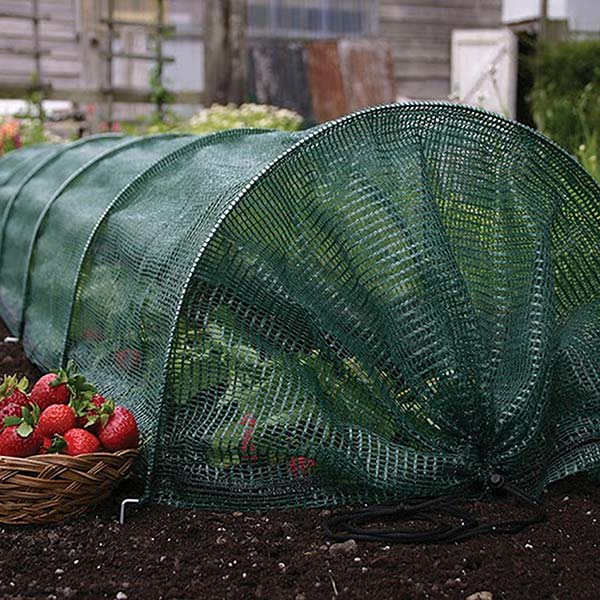
Read More
Fruit Tree Planting Advice
22 June 2020Growing your own soft fruit can be one of the most rewarding experiences in the gardener’s year. Not only are many fruits blessed with a marvellous show of blossom during spring, but they provide a bounty of produce throughout the summer and autumn and even throughout the long winter months.
Successfully growing fruit trees is quite easy if some simple guidelines are followed.
Read More
SWEET PEA STRIPS - TIPS & ADVICE
22 June 2020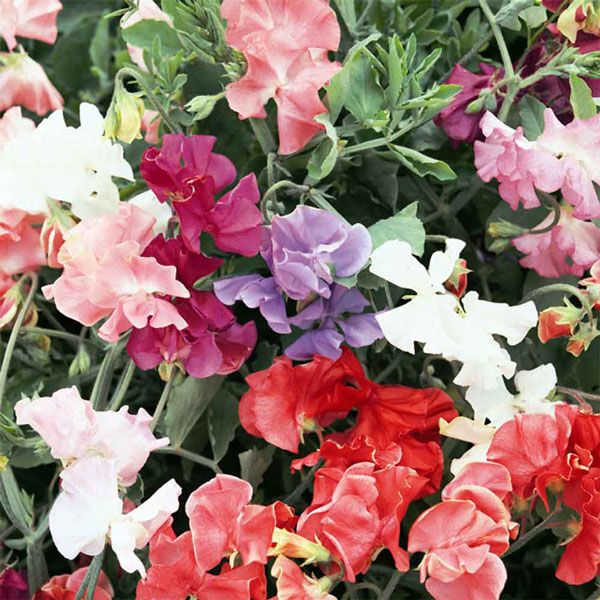
Sweet Pea Strips
Kings Seeds are known worldwide for the quality of their sweet peas. Kings Seeds now offer ready grown Sweet peas in strips.
Each Strip contains approximately 20 plants.
On arrival, carefully unpack your Sweet pea Strips and water if required. Do not be alarmed if a little of the compost has fallen away from the strip, this occasionally happens but will not affect the overall performance of the plants. These can be planted straight away as long as the ground isn't frozen or waterlogged.
At Kings we offer Sweet peas for planting in the garden:- Spencer Waved Premium Mixed and Old Spice Mixed, along with Dwarf Cupid Mixed – ideal for planting in containers.
How to Grow
Sweet peas like a well prepared soil with plenty of organic matter added to it, as this will help retain the moisture they require to grow and flower well. Prior to planting add a dressing of Kings Sweet pea fertiliser, and lightly rake into the Soil.
If planting in the garden, Spencer Waved Premium Mixed or Old Spice Mixed will require some form of support to grow up against, this can be a trellis or a Pea & Bean net. These varieties will reach approximately 180cm tall by the end of the season.
We do not recommend dividing the plants up individually; we suggest that the strip of plants is split into small sections of 3-4 plants and planted altogether as one unit. Gently tease each small clump of plants apart and plant at their final planting position 30cm apart with as much compost intact as possible. Water in after planting and continue to water if the weather is very dry. Don’t be alarmed if plants after transplanting get a few yellow leaves near the base, this is quite normal and the plants will still grow ok after recovering from being transplanted. Two to three weeks after planting, once the plants have become established, pinch out the growing tip of each plant as this will encourage them to bush out and produce more flowers. When planting against a net, as the plants grow they can be gently spread out and encouraged to climb.
You can pinch out the tops of the plants when they have 3 pairs of true leaves, as this will encourage them to grow bushier.
Dwarf Sweet Pea Cupid Mixed can be split up in the same way and planted in baskets or containers in a good potting cost. Alternatively they can be planted towards the front of borders for some early summer colour.
Flowers
Once plants are established they will produce beautifully scented blooms ideal for cutting and bringing indoors. It is important to pick flower stalks regularly and not allow them to go to seed as this will stop the plants from flowering over a longer period. Occasionally plants can suffer from bud drop, where you get a stem with flowers as the buds have dropped off. This can be caused by changeable weather, cold nights, very wet weather and can also be caused by watering with cold water in the evenings. It is always advisable to water Sweet Peas when in flower, early in the morning as the day is getting warmer. After a short time the plants will settle back to normal and once again produce full stems of blooms.
Pest and Diseases
Occasionally Sweet Peas can get an attack from aphids, these can be controlled by spraying with a suitable insecticide or organic soft soap.
Sometimes blooms can get invaded by pollen beetles; these can be a nuisance if bringing blooms indoors. A handy tip is to cut the blooms, place in a vase and then overnight put in a garage or shed with the door left ajar. The beetles will fly towards the light as the day breaks, reducing the amount of beetles in the blooms.
Late in the season Sweet pea foliage can sometimes get the fungal disease Mildew. This will give the leaves a white appearance. Late on in the season it is not worth spraying with a fungicide and the blooms will not be affected.
Read More
Kings Seeds are proud to share the achievements of Jeremy Scott who has won Thrive/RNIB Blind Gardener of the Year
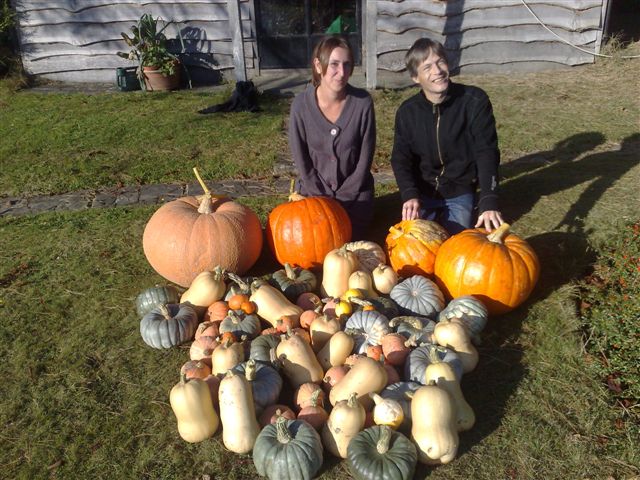
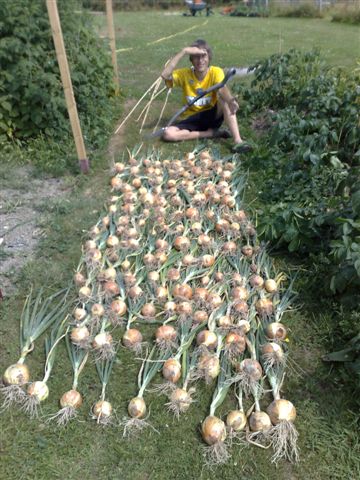
Jeremy sitting proudly with his Gourds and Onions

Jeremy being interviewed by Christine Walkden for Radio 4's Gardeners Question Time
Read More